Side effects of quinine water. Quinine Water: Safety, Side Effects, and Health Implications
Is quinine water safe for consumption. What are the potential side effects of drinking tonic water. How does quinine in tonic water differ from medicinal quinine. Can tonic water provide any health benefits.
The Origins and History of Quinine Water
Quinine, a bitter compound extracted from the bark of the cinchona tree, has a rich history dating back centuries. Native to South America, Central America, the Caribbean islands, and parts of western Africa, the cinchona tree became a crucial source of antimalarial treatment. In the early 20th century, quinine played a pivotal role in reducing mortality rates among workers constructing the Panama Canal.
The evolution of quinine from a medicinal compound to a popular beverage ingredient is a fascinating journey. Tonic water, the most common quinine-containing drink, was initially created as a more palatable way to consume the bitter substance. The first tonic waters were a simple mixture of powdered quinine, sugar, and soda water.
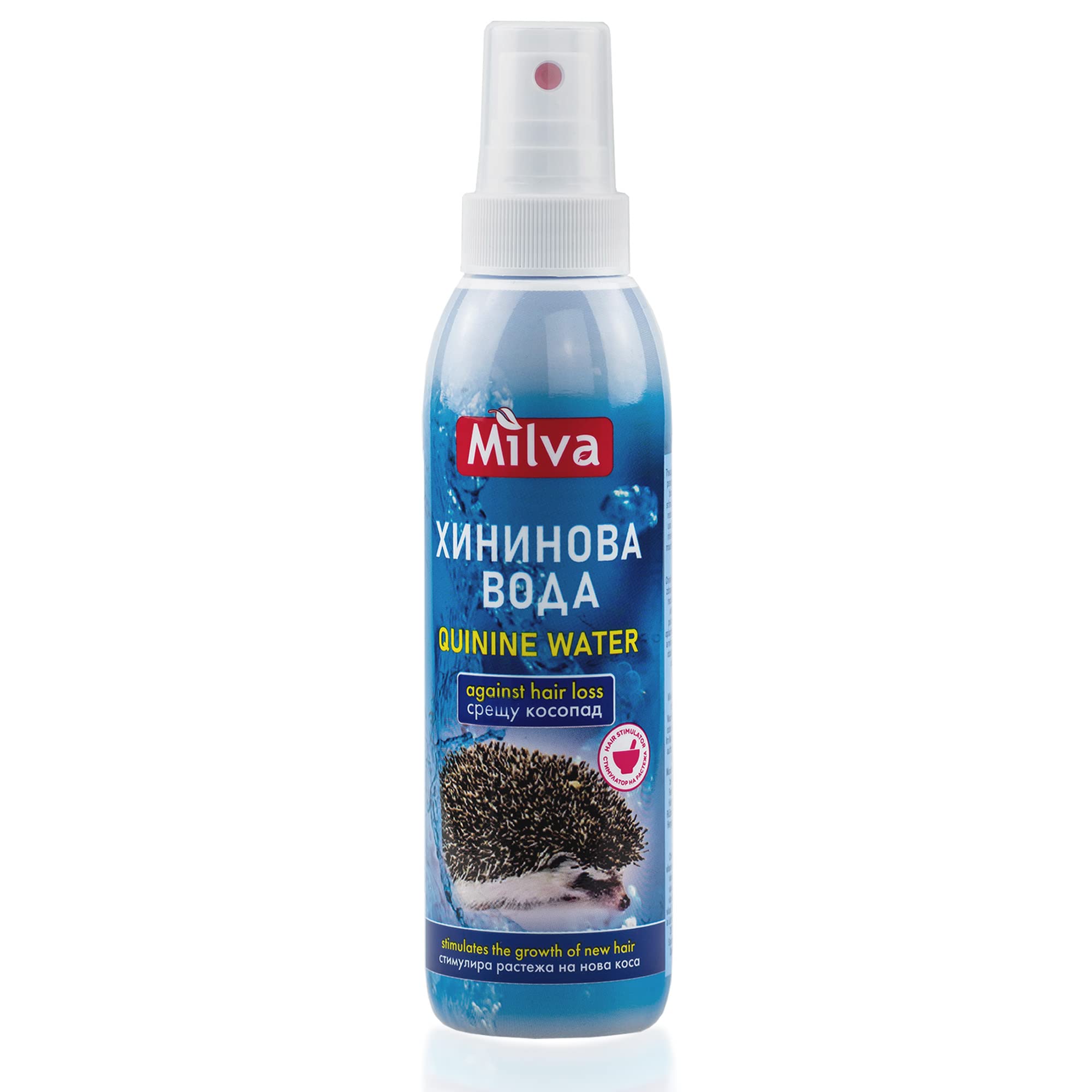
From Medicine to Mixer: The Transformation of Tonic Water
Over time, tonic water transitioned from a purely medicinal concoction to a beloved mixer in the world of cocktails. The gin and tonic, perhaps the most iconic quinine water cocktail, emerged as a popular drink that combined the medicinal properties of quinine with the pleasurable effects of alcohol.
Quinine Content in Modern Tonic Water: Regulations and Safety
Today, the quinine content in tonic water is strictly regulated to ensure consumer safety. The U.S. Food and Drug Administration (FDA) has set a limit of 83 parts per million of quinine in tonic water. This regulation aims to minimize potential side effects while still maintaining the characteristic bitter flavor that defines tonic water.
Is tonic water safe for regular consumption? Generally, yes. The amount of quinine in commercial tonic water is significantly lower than the doses used for medicinal purposes. However, it’s essential to be aware of potential risks and side effects, especially for individuals with certain health conditions or those taking specific medications.
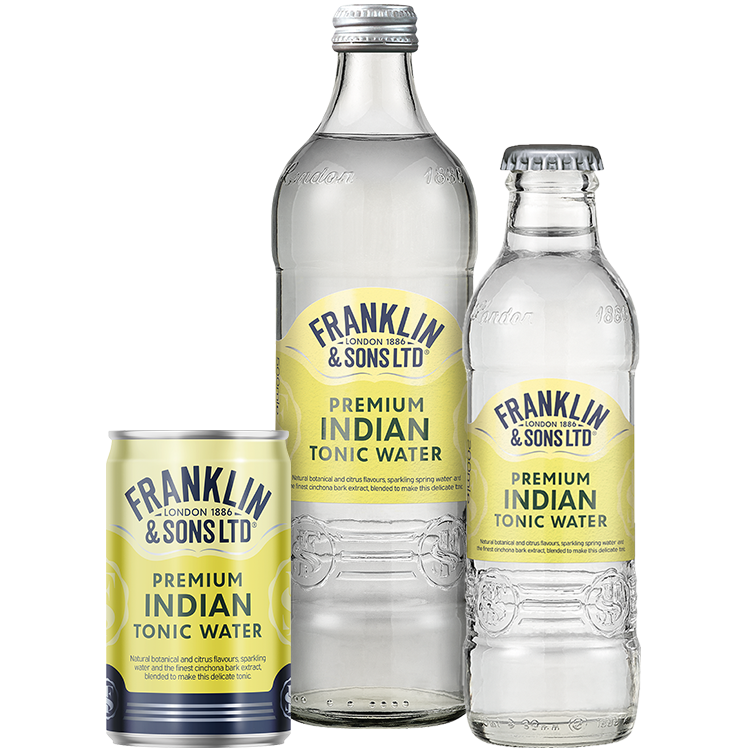
Comparing Medicinal Quinine to Tonic Water Quinine
How does the quinine in tonic water differ from medicinal quinine? Medicinal quinine, typically administered in pill form, contains much higher concentrations of the compound. To consume an equivalent amount of quinine from tonic water as found in a single medicinal dose, one would need to drink approximately two liters of tonic water daily – an amount far exceeding typical consumption patterns.
Potential Health Benefits of Quinine Water
While tonic water is primarily consumed for its distinctive taste and as a cocktail mixer, some people believe it may offer certain health benefits. However, it’s crucial to approach these claims with caution and consult healthcare professionals before using tonic water for medicinal purposes.
Malaria Treatment: The Primary Medical Use of Quinine
Quinine’s most significant medical application is in the treatment of malaria. It acts by killing the organism responsible for the disease. However, it’s important to note that quinine is not used for malaria prevention, and the dosage found in tonic water is far too low to have any antimalarial effects.

Leg Cramps: A Controversial Application
Some individuals consume tonic water to alleviate nighttime leg cramps associated with circulatory or nervous system problems. However, this practice is not medically recommended due to the lack of scientific evidence supporting its efficacy and the potential risks associated with regular quinine consumption.
Side Effects and Risks of Quinine Water Consumption
While the quinine content in tonic water is generally considered safe for most people, it can still cause adverse reactions in some individuals. Understanding these potential side effects is crucial for making informed decisions about tonic water consumption.
Common Side Effects of Quinine in Tonic Water
What are the most common side effects associated with quinine in tonic water? Although rare due to the low concentration, some individuals may experience:
- Nausea
- Stomach cramps
- Diarrhea
- Vomiting
- Tinnitus (ringing in the ears)
- Confusion
- Nervousness
It’s important to note that these side effects are more commonly associated with medicinal quinine doses rather than the amounts found in tonic water.
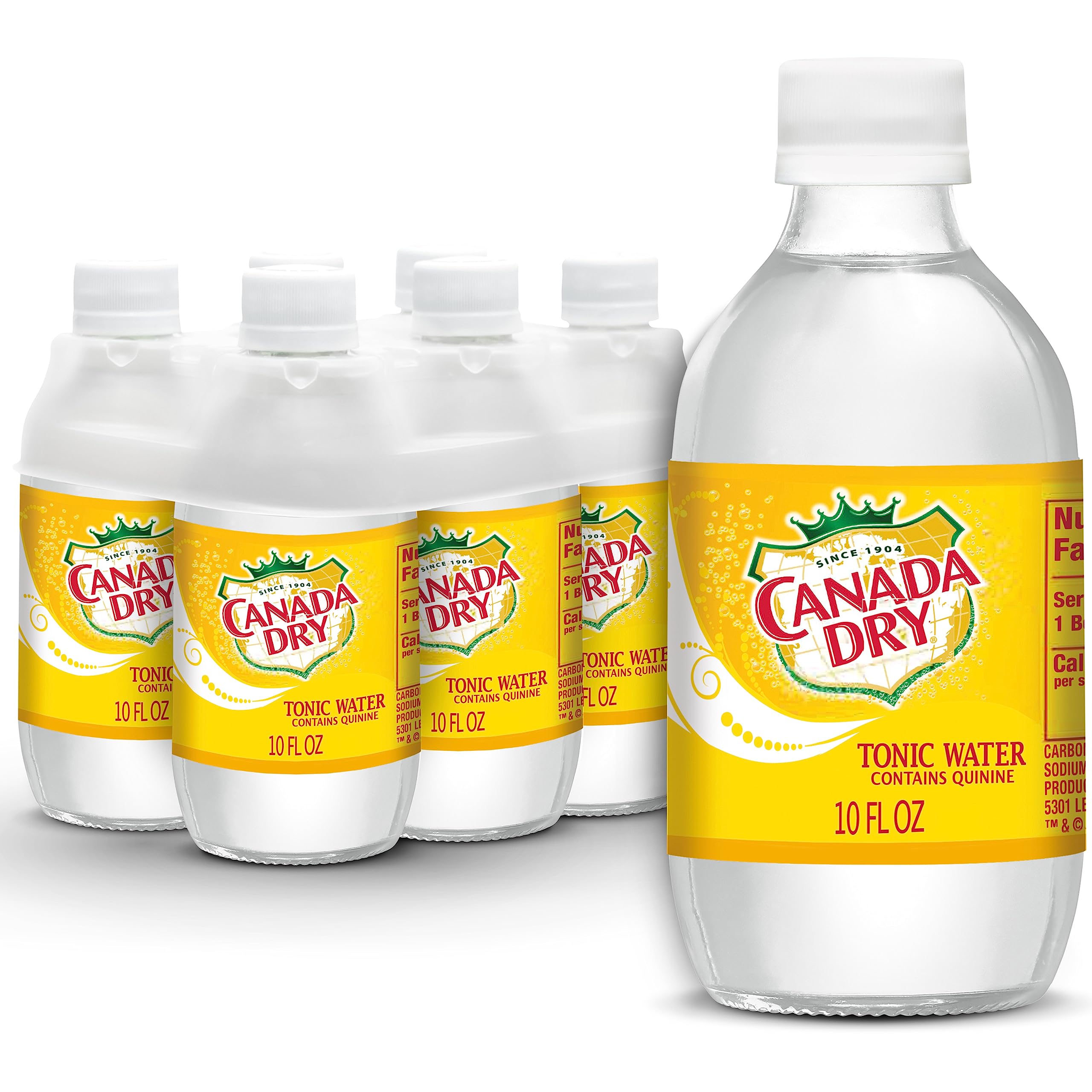
Severe Side Effects and Risks
In rare cases, quinine can cause more serious adverse reactions. These severe side effects are primarily linked to medicinal quinine rather than tonic water consumption, but they underscore the importance of caution:
- Bleeding problems
- Kidney damage
- Abnormal heart rhythms
- Severe allergic reactions
Given these potential risks, individuals who have experienced adverse reactions to quinine or tonic water in the past should avoid further consumption and consult a healthcare provider.
Who Should Exercise Caution with Quinine Water?
Certain individuals may be at higher risk of experiencing adverse effects from quinine, even in the small amounts found in tonic water. It’s advisable to consult a healthcare professional before consuming tonic water regularly if you:
- Have an abnormal heart rhythm, especially a prolonged QT interval
- Experience low blood sugar, as quinine can potentially cause further drops in blood glucose levels
- Are pregnant
- Have kidney or liver disease
- Take medications such as blood thinners, antidepressants, antibiotics, antacids, or statins
While these conditions may not necessarily preclude tonic water consumption, it’s essential to inform your healthcare provider about your tonic water intake if you’re prescribed quinine for medical reasons.

The Versatility of Tonic Water in Culinary Applications
Beyond its traditional role as a cocktail mixer, tonic water has found its way into various culinary applications. How are chefs and home cooks incorporating tonic water into their recipes?
Innovative Cocktail Combinations
While gin and tonic remains a classic, mixologists are increasingly experimenting with tonic water in combination with other spirits. Tequila, brandy, and various liqueurs are now being paired with tonic water to create unique and refreshing cocktails.
Tonic Water in Cooking
Chefs have discovered that tonic water’s unique flavor profile can enhance certain dishes. Some innovative uses include:
- Incorporating tonic water into batter for frying seafood, adding a subtle bitterness that complements the fish
- Using tonic water in desserts, particularly those that also feature gin or other spirits, to create complex flavor profiles
- Adding tonic water to marinades or sauces for a hint of bitterness that can balance rich or sweet flavors
Debunking Myths: Tonic Water as a Home Remedy
Despite its historical medicinal uses, it’s crucial to dispel common misconceptions about tonic water’s therapeutic properties. Can tonic water effectively treat conditions like nighttime leg cramps or restless leg syndrome?
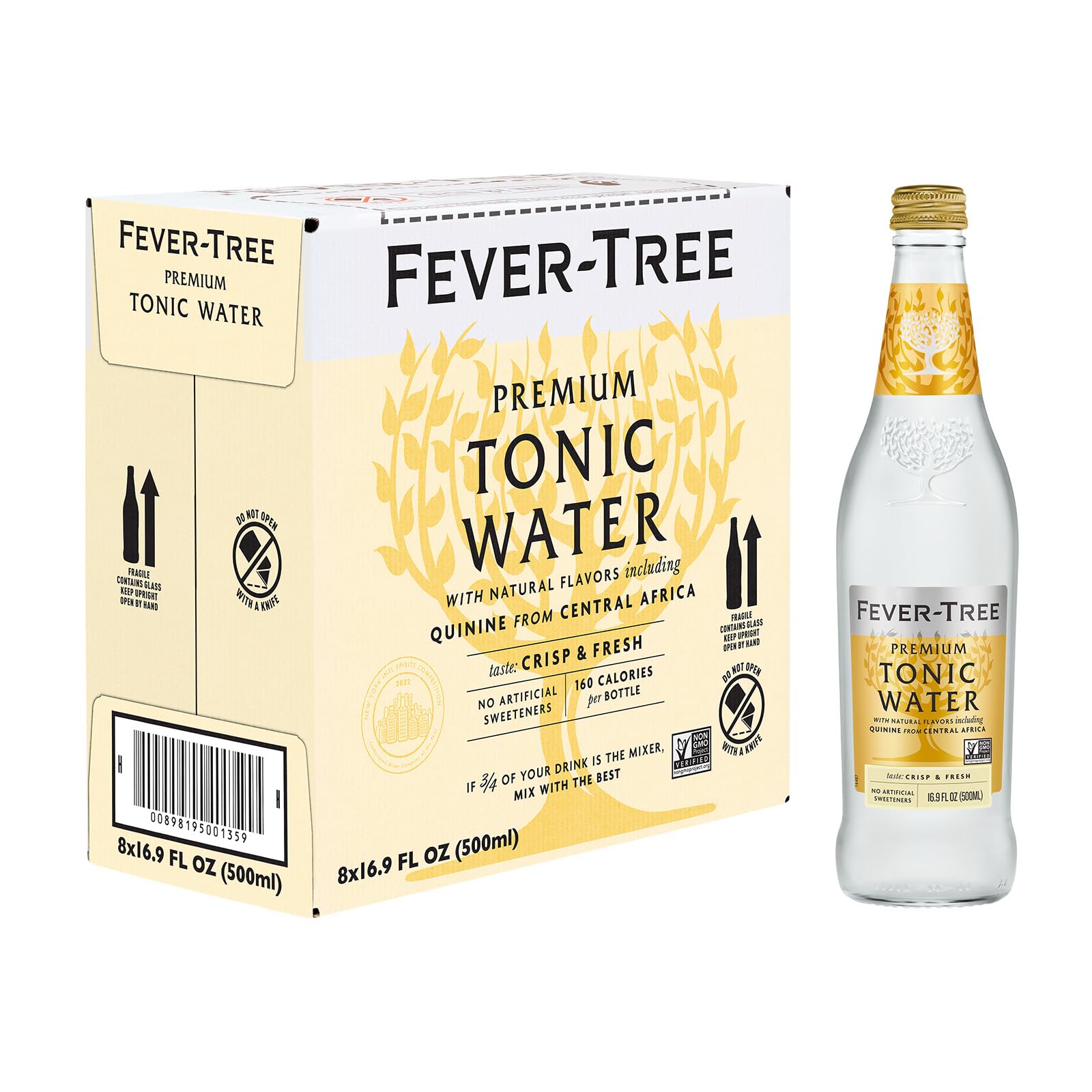
The scientific evidence does not support the use of tonic water or quinine for treating these conditions. While some individuals may report subjective improvements, the potential risks associated with regular quinine consumption outweigh any unproven benefits. Instead of relying on tonic water as a home remedy, it’s advisable to consult a healthcare professional and explore evidence-based treatment options for these conditions.
The Future of Quinine Water: Trends and Innovations
As consumer preferences evolve and the beverage industry continues to innovate, what does the future hold for tonic water and quinine-based drinks?
Craft Tonic Waters
The rise of craft cocktails has led to increased interest in premium and artisanal tonic waters. These products often feature unique botanical blends, reduced sugar content, and sometimes even locally sourced ingredients. Craft tonic waters aim to elevate the drinking experience by offering more complex flavor profiles that complement high-quality spirits.

Low-Calorie and Sugar-Free Options
As health-conscious consumers seek alternatives to sugary beverages, tonic water manufacturers are responding with low-calorie and sugar-free options. These products use artificial sweeteners or natural alternatives like stevia to maintain the characteristic bitterness of tonic water while reducing its caloric content.
Flavored Tonic Waters
To appeal to a broader audience and offer more variety, many companies are introducing flavored tonic waters. These products infuse traditional tonic water with natural flavors such as elderflower, cucumber, or various citrus fruits, creating new possibilities for cocktail mixing and standalone enjoyment.
As tonic water continues to evolve, it’s likely that we’ll see further innovations in flavor profiles, ingredient sourcing, and potential health-oriented formulations. However, it’s crucial for consumers to remain informed about the potential risks and benefits associated with quinine consumption, regardless of its form or presentation.

In conclusion, while tonic water remains a popular and generally safe beverage, it’s important to consume it mindfully. Understanding its history, composition, potential effects, and limitations can help individuals make informed decisions about incorporating tonic water into their diets or cocktail preferences. As always, moderation is key, and any concerns about quinine consumption should be discussed with a healthcare professional.
Is It Safe and What Are the Side Effects?
Overview
Quinine is a bitter compound that comes from the bark of the cinchona tree. The tree is most commonly found in South America, Central America, the islands of the Caribbean, and parts of the western coast of Africa. Quinine was originally developed as a medicine to fight malaria. It was crucial in reducing the death rate of workers building the Panama Canal in the early 20th century.
Quinine, when found in small doses in tonic water, is safe to consume. The first tonic waters contained powdered quinine, sugar, and soda water. Tonic water has since become a common mixer with liquor, the most well-known combination being gin and tonic. The U.S. Food and Drug Administration (FDA) allows tonic water to contain no more than 83 parts per million of quinine, because there can be side effects from quinine.
Today, people sometimes drink tonic water to treat nighttime leg cramps associated with circulatory or nervous system problems. However, this treatment is not recommended. Quinine is still given in in small doses to treat malaria in tropical regions.
However, this treatment is not recommended. Quinine is still given in in small doses to treat malaria in tropical regions.
Quinine’s primary benefit is for the treatment of malaria. It’s not used to prevent malaria, but rather to kill the organism responsible for the disease. When used to treat malaria, quinine is given in a pill form.
Quinine is still in tonic water, which is consumed around the world as a popular mixer with spirits, such as gin and vodka. It’s a bitter beverage, though some manufacturers have tried to soften the taste a little with added sugars and other flavors.
Quinine in tonic water is diluted enough that serious side effects are unlikely. If you do have a reaction, it may include:
- nausea
- stomach cramps
- diarrhea
- vomiting
- ringing in the ears
- confusion
- nervousness
However, these are more common side effects for quinine taken as a medication. Among the most serious potential side effects associated with quinine are:
- bleeding problems
- kidney damage
- abnormal heartbeat
- severe allergic reaction
Keep in mind that these reactions are primarily linked to quinine, the medication. You would have to drink about two liters of tonic water a day to consume a day’s dose of quinine in pill form.
You would have to drink about two liters of tonic water a day to consume a day’s dose of quinine in pill form.
If you’ve had a bad reaction to tonic water or quinine in the past, you should not try it again. You may also be advised against taking quinine or drinking tonic water if you:
- have an abnormal heart rhythm, especially a prolonged QT interval
- have low blood sugar (because quinine can cause your blood sugar to drop)
- are pregnant
- have kidney or liver disease
- are taking medications, such as blood thinners, antidepressants, antibiotics, antacids, and statins (these medications may not preclude you from taking quinine or drinking tonic water, but you should tell your doctor about these and any other medications you take if you’re prescribed quinine)
While a gin and tonic and vodka and tonic are staples at any bar, tonic water is becoming a more versatile beverage. It’s now mixed with tequila, brandy, and just about any other alcoholic beverage. Citrus flavors are often added, so if you see the term “bitter lemon” or “bitter lime,” you know the drink includes tonic water with a sour fruit flavor added.
Citrus flavors are often added, so if you see the term “bitter lemon” or “bitter lime,” you know the drink includes tonic water with a sour fruit flavor added.
However, tonic water isn’t just used to mix with spirits. Chefs may include tonic water in batter when frying seafood or in desserts that also include gin and other liquors.
If tonic water is your mixer of choice, you’re probably safe to have a little now and then. But don’t drink it thinking it will cure nighttime leg cramps or conditions such as restless leg syndrome. The science isn’t there for tonic water or quinine to treat these conditions. See a doctor instead and explore other options. But if you’re traveling to a part of the world where malaria is still a threat, ask about the use of quinine to treat the disease if you’re unfortunate enough to contract it.
Safety, side effects, and possible benefits
We include products we think are useful for our readers. If you buy through links on this page, we may earn a small commission Here’s our process.
Medical News Today only shows you brands and products that we stand behind.
Our team thoroughly researches and evaluates the recommendations we make on our site. To establish that the product manufacturers addressed safety and efficacy standards, we:
- Evaluate ingredients and composition: Do they have the potential to cause harm?
- Fact-check all health claims: Do they align with the current body of scientific evidence?
- Assess the brand: Does it operate with integrity and adhere to industry best practices?
We do the research so you can find trusted products for your health and wellness.
Read more about our vetting process.
Was this helpful?
Tonic water is a soft drink containing quinine, which gives it a bitter taste. Quinine is a common treatment for malaria. Some people believe that it can also help with leg cramps and restless legs syndrome.
Quinine comes from the bark of the cinchona tree. This tree is native to central and South America, as well as some islands in the Caribbean and western parts of Africa.
This tree is native to central and South America, as well as some islands in the Caribbean and western parts of Africa.
People have consumed quinine in tonic water to help treat cases of malaria for centuries.
In this article, learn about what quinine is and what its side effects and possible benefits are.
Doctors continue to use quinine as a part of malaria treatment. However, research suggests that newer treatments may eventually replace quinine as a malaria treatment due to quinine’s adverse effects at therapeutic doses.
Researchers cite the poor tolerability of the drug and difficulties complying with complex dosing routines as reasons to be concerned about regular medicinal use.
As a food additive, quinine offers a bitter taste. Manufacturers usually add it to tonic water.
Some people use tonic water to help treat nighttime leg cramps, but there is little evidence to suggest that this is effective.
Tonic water is available for purchase online.:max_bytes(150000):strip_icc()/safety-and-side-effects-of-pepto-bismol-for-ibs-4128810_V3-a30625fab64a44c88cec00db7a06542c.png)
Experts consider quinine safe to consume in small doses. The United States Food and Drug Administration (FDA) have approved up to 83 parts per million in carbonated beverages.
The FDA also specify that manufacturers must place quinine on the label for consumers to easily see.
Some people may experience allergic reactions to quinine. If this is the case, a person should avoid tonic water and any other products that contain quinine.
People who should avoid quinine in medications include:
- women who are pregnant or breastfeeding
- those with abnormal heart rhythms
- those with liver or kidney disease
- those with low blood sugar
Some medications can interact with quinine. These include:
- antidepressants
- antacids
- statins
- blood thinners
- neuromuscular-blocking drugs
- antibiotics
- seizure medication
The amount of quinine in tonic water is not likely to interact with a person’s medication or cause issues for people with the medical conditions listed above. However, people with these risk factors should not take quinine supplements or medications unless a doctor prescribes it.
However, people with these risk factors should not take quinine supplements or medications unless a doctor prescribes it.
Share on PinterestTonic water does not have any known nutritional benefits.
Many people believe that drinking tonic water helps with nighttime leg cramps and restless legs syndrome. However, there is no scientific evidence verifying this belief.
In fact, the FDA have warned doctors against prescribing quinine to treat leg cramps or restless legs syndrome.
Tonic water is a carbonated soft drink that may contain sugar and has little nutritional value. The quinine present in tonic water provides a distinctive bitter flavor. While not dangerous, tonic water does not have any benefits and could lead to an unnecessary increase in calorie consumption.
Quinine is very diluted in tonic water. The likelihood of a person experiencing any side effects from drinking tonic water is slim. However, side effects of quinine can include:
- ringing in the ears
- vomiting
- stomach cramps
- nervousness
- nausea
- diarrhea
- confusion
As a medication, quinine may have more severe side effects. Some of the possible side effects of taking quinine as a medication include:
Some of the possible side effects of taking quinine as a medication include:
- abnormal heartbeat
- kidney damage
- severe allergic reaction
- electrolyte imbalance
- vision or eye issues
- problems with bleeding
- thrombocytopenia (decreased blood platelets)
- lung toxicity
People who regularly drink tonic water may also want to consider the extra sugar and calories that they are consuming. Soft drinks, including tonic water, have little nutritional value but contribute to a person’s daily calorie intake.
The quinine in tonic water helps give it a bitter taste. People should not mistake tonic water for a healthful drink, as it may contain sugar and provides no additional nutritional value.
Tonic water cannot help a person with leg cramps or restless legs syndrome. The quinine in tonic water is very diluted.
It is unlikely that a person will experience even mild side effects from drinking tonic water, but they should be cautious if they are taking quinine as a medication and try to report any side effects to a doctor.
What is quinine? Health Benefits and Risks
If you’re a fan of tonics, and not just for taking it with gin, you may have stopped to check the nutritional information label and stumble upon the phrase “contains quinine” or “source of quinine.” But what is this ingredient? Should we be concerned about consuming it, or can we be happy eating it?
This substance is commonly used in beverages to enhance the taste and give it that bitter note that characterizes tonic. In some countries it is even called quinada water instead of the commercial name. Although in the end we are dealing with an alkaloid (a nitrogenous substance that we find in plants and is a natural stimulant) of a crystalline form and natural origin.
Index
- 1 What is the origin of quinine?
- 2 Good for something? possible benefits
- 3 Are there foods with quinine?
- 4 Who should avoid it?
- 5 Beware of abusing your intake
What is the origin of quinine?
For many years this substance has been obtained from the bark of the cinchona tree, Peruvian tree Found mainly in the Amazon jungle.:max_bytes(150000):strip_icc()/nexplanon-birth-control-implant-faq-9068641-5c8ad59046e0fb00014a9688.png) This bark was widely used by the pre-Columbian cultures of Peru, Ecuador and Colombia for its medicinal properties. In fact, after the discovery of America, its properties were recognized in Europe in 1631, when the Jesuit Alonso Messia brought cinchona bark to Rome. Over the years, various botanical studies have been carried out on different types of cinchona. For example, Chinchon, who is said to have cured the Countess of Chinchon.
This bark was widely used by the pre-Columbian cultures of Peru, Ecuador and Colombia for its medicinal properties. In fact, after the discovery of America, its properties were recognized in Europe in 1631, when the Jesuit Alonso Messia brought cinchona bark to Rome. Over the years, various botanical studies have been carried out on different types of cinchona. For example, Chinchon, who is said to have cured the Countess of Chinchon.
After these events, the use of cinchona bark was promoted as a natural remedy for a wide variety of ailments, especially as a remedy for influenza and malaria. Therefore, it began to be sold at a high price and the demand for it increased more and more. Quinine is a bitter compound which comes from the bark of the cinchona tree. This was critical to reducing the death rate of construction workers on the Panama Canal in the early 20th century.
Good for something? possible benefits
Quinine is undoubtedly one of the main compounds in tonic water, a well-known carbonated drink that uses this compound as a flavoring agent to impart a bitter taste. However, consumption of large amounts can cause side effects, and the US Food and Drug Administration (FDA) has limited its concentration to 83 parts per million.
However, consumption of large amounts can cause side effects, and the US Food and Drug Administration (FDA) has limited its concentration to 83 parts per million.
Many people use tonic as a digestive drink, as for soothe dizziness to relieve vomiting . In addition, it renders vascularization of the gastric mucosa. They are not recommended as an effective remedy for indigestion as they are chemicals. However, many people use it as a home remedy to relieve discomfort.
In addition, nowadays people sometimes drink tonic water to treat nocturnal leg cramps associated with problems of the cardiovascular or nervous system. However, this treatment is not recommended.
On the other hand, as we have already said, it also became widely used in the treatment of malaria, until it was replaced by other more effective synthetic drugs such as primaquine, chloroquine or acriquine. Despite this, quinine is still used to treat resistant malaria.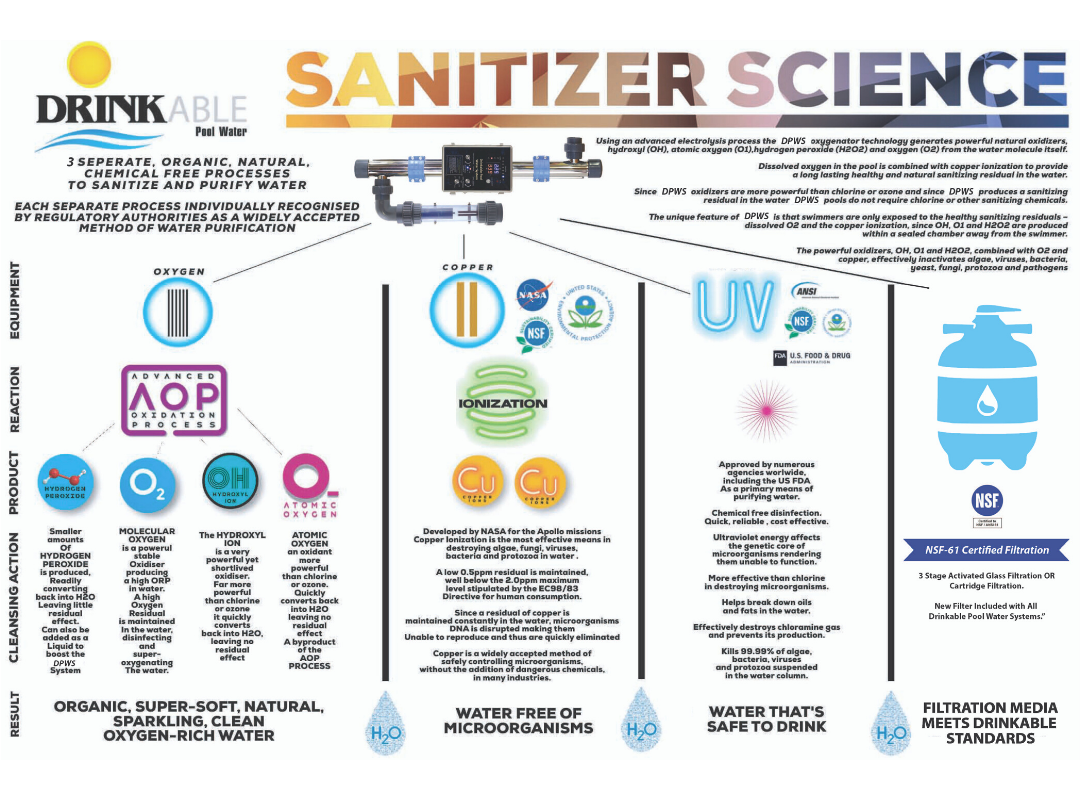 However, in these cases, medicine has advanced enough to make its own decisions. The specialist will evaluate your case and prescribe appropriate medications depending on the severity of the disease.
However, in these cases, medicine has advanced enough to make its own decisions. The specialist will evaluate your case and prescribe appropriate medications depending on the severity of the disease.
Quinine, found in low doses in tonic water, is safe to consume. The first tonic waters contained powdered quinine, sugar and soda. Since then, tonic has become a common mix with liquor, with the most famous combination being gin and tonic. The FDA allows tonic water to contain no more than 83 parts per million of quinine because this substance can have side effects.
Are there products with quinine?
You may have seen this ingredient in some products. The main dietary source of quinine is tonic or bitter soft drinks with lemon . Sometimes the ingredient can be added to carbonated drinks such as tonic water as the hydrochloride or sulfate salt used for flavoring. However, the amount in any food is regulated. Foods containing quinine cannot exceed 83 ppm, which is usually a safe amount to eat. There are no products in nature that contain this substance, so you should not be afraid when using natural products.
There are no products in nature that contain this substance, so you should not be afraid when using natural products.
This is negligible for a drink such as tonic, but drinking large amounts can cause dangerous side effects. Do not drink quinine drinks for medicinal purposes. However, tonic is not only used for mixing with spirits. Some cooks may add tonic to the batter when frying shellfish, or to desserts that also include gin and other spirits.
Historically, tonics have had very high levels of quinine and are very bitter, requiring sugar and sometimes gin to improve the flavor profile. Today, quinine in tonic provides the familiar bitter taste we are used to without the risk of overdose.
Who should avoid it?
Quinine can cause serious side effects on the heart, kidneys or blood cells. It is recommended that you stop taking this substance and contact your doctor immediately if you experience a headache with chest pain and severe dizziness, fast or rapid heartbeat, unusual bruising or bleeding (nosebleeds, bleeding gums, purple or red spots under the skin), signs of infection . (fever, chills, mouth ulcers), severe lower back pain, or blood in the urine.
(fever, chills, mouth ulcers), severe lower back pain, or blood in the urine.
If you have had a bad reaction to tonic or quinine in the past, you should not try it again. Your health care provider may also tell you not to take quinine or tonic water if:
- Your heart rate is abnormal, especially if you have a long interval
- You have low blood sugar (because quinine can lower blood sugar)
- You are pregnant. It is not known whether quinine will harm an unborn baby. It is recommended to ask your doctor if you are pregnant or plan to become pregnant while taking this substance. In addition, it can pass into breast milk and harm a nursing baby.
- Have kidney or liver disease
- Take medications such as anticoagulants, antidepressants, antibiotics, antacids, and statins (these drugs may not prevent you from taking quinine or tonic water, but you should tell your doctor)
Beware of abusing your intake
We mentioned this earlier, quinine can cause side effects if taken in excess. Some examples are allergic reactions, itching, or low blood sugar; which can cause hearing loss, headache, dizziness, sweating, fatigue and weakness.
Some examples are allergic reactions, itching, or low blood sugar; which can cause hearing loss, headache, dizziness, sweating, fatigue and weakness.
As long as we take a tonic or don’t exceed the recommended amount, there shouldn’t be much of a health hazard. So do not be afraid to drink with this substance when you go out with friends. Remember that the amount of quinine that is part of these liquids is not so large as to harm our health.
The quinine in the tonic is so dilute that serious side effects are unlikely. If you have a drug reaction with this substance, it may include:
- nausea
- Stomach cramps
- Diarrhea
- vomiting
- Ringing in the ears
- confusion
- nervousness
However, these are the more common side effects of quinine taken as a medicine. Among the more serious possible side effects associated with quinine are bleeding problems, kidney damage, an abnormal heartbeat, and a severe allergic reaction.
Be aware that these reactions are mainly related to quinine, a drug. You will have to drink about two liters of tonic water a day to get your daily dose of quinine in tablet form. So eat in moderation, but without fear of putting your health at risk.
Potassium permanganate
Use during pregnancy and lactation
During pregnancy and lactation, the use of the drug is possible if the potential benefit to the mother outweighs the possible risk to the fetus or child, after consultation with the attending physician.
Side effects
Allergic reactions. Potassium permanganate in high concentration solutions can cause tissue irritation, with increased tissue sensitivity – a burn. If the solution is ingested in people with low acidity of gastric juice, it leads to a hemotoxic effect (methemoglobinemia).
If you experience side effects that are listed in the instructions or they get worse, or you notice any other side effects not listed in the instructions, tell your doctor.
Overdose
Symptoms: sharp pain in the mouth, along the esophagus, in the abdomen, vomiting, diarrhea; the mucous membrane of the oral cavity and pharynx is edematous, dark brown, purple, laryngeal edema, development of mechanical asphyxia, burn shock, motor excitation, convulsions, parkinsonism, hemorrhagic colitis, nephropathy, hepatopathy are possible. With reduced acidity of gastric juice, methemoglobinemia may develop with severe cyanosis and shortness of breath.
Lethal dose for children – about 3 g, for adults – 0.3-0.5 g / kg.
Treatment: methylene blue (50 ml of 1% solution), ascorbic acid (intravenously – 30 ml of 5% solution), cyanocobalamin – up to 1 mg, pyridoxine (intramuscularly – 3 ml of 5% solution).
Interaction with other medicinal products
Interaction with certain organic substances (tannin, sugar, coal, alcohol, glycerol, organic acids) or easily oxidizing substances (sulphur, sodium thiosulfate, sodium nitrate, reduced iron) may cause an explosion.:max_bytes(150000):strip_icc():format(webp)/3156932_color-5bae4a3546e0fb00262c8c4d.png)
When interacting with bromides, iodides, chlorides, free halides are released.
Special instructions
Potassium permanganate solution, applied externally, turns the skin brown. High concentrations may cause skin irritation.
Influence on the ability to drive vehicles, mechanisms
The drug does not affect the ability to drive vehicles and work with potentially dangerous mechanisms that require increased concentration.
Product form
Powder for solution for topical and external use.
3 g and 5 g each in glass tubes, sealed with polyethylene stoppers.
3 g and 5 g glass vials with screw neck, sealed with screw caps.
3 g and 5 g in glass bottles with a screw neck, sealed with screw caps with spatulas.
15 g in brown glass bottles with screw neck, sealed with screw caps with a control ring and a polyethylene gasket.
15 g each in brown glass bottles with a screw neck, sealed with screw caps with a control ring and a polyethylene gasket with spatulas.
